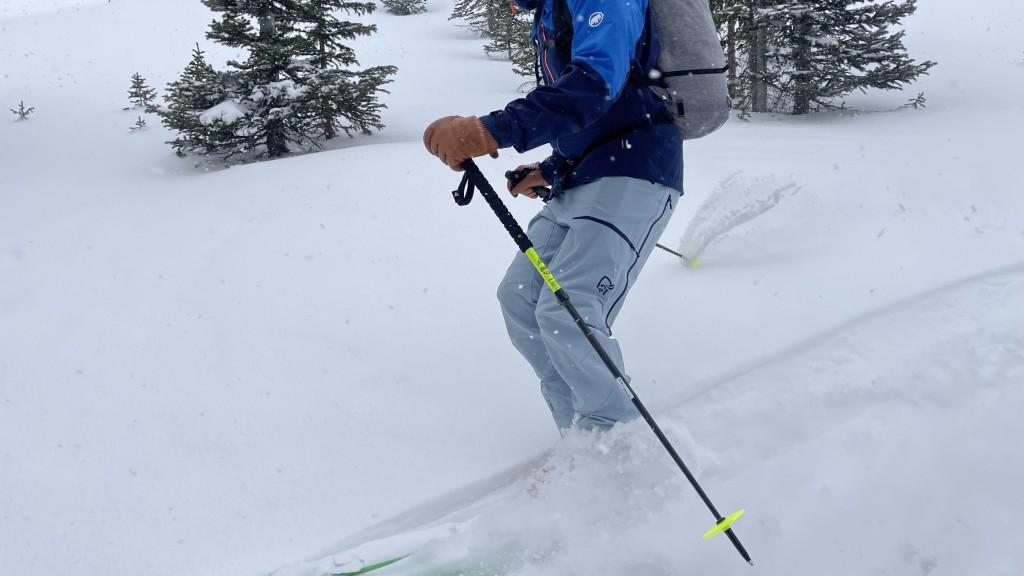
Cross country skiing without tracks allows you to have fun on the snow, and it's a great alternative to groomed trails. It gives you the opportunity to ski on a snowy winter trail uncrowded by other skiers and offers stunning views of surrounding areas.
It's a great way for you to get your legs moving and improve your ski skills. It is also a good choice for families or groups of friends who are looking for a fun day out on the slopes.
You will need the right gear, no matter if you are an expert or beginner cross-country skier. All types of cross-country skis are available at your local Nordic shop or online.
Cross-country skiing off-trail requires different equipment, so make sure to take that into consideration when shopping for your gear.

If you're just getting started, you should begin with a pair of beginner-to-intermediate classic cross-country skis and an easy-to-use pair of cross-country ski poles. These will let you learn the basics of classic ski stance and shuffle and glide.
Pairs of lightweight backcountry skis, which are suitable for more advanced cross-country skiers, can be used to tackle off-trail terrain. These have steel edges to aid you in carving turns on downhills. They have a sculpted waist, rockered tip, and can be used with AT, telemark, or touring bindings.
A good set lightweight cross-country skiing skis should have a width that is wide enough to be comfortable for most people and narrow enough so it doesn't cause friction on icy snow. A sidecut, or variation in the ski's width, is also a good feature to give you better control over steeper hills.
Your weight should be evenly distributed across both skis. You should feel a little bit of a "cushy", similar feeling to walking on soft ground.
You can also "bounce" the skis slightly from the snow. This helps you to 'bounce' into the next turn, rather than sliding off the snow and losing your momentum.

Once you are proficient in these techniques you can begin to master other skills. You can snowplough to increase speed and use parallel skids and kick turns. Step turns and tucking can be used to avoid obstacles downhill.
Before you head out, always check the weather forecast. You will know if it is safe to travel on the trails and if there are any unexpected conditions that could pose a danger for others.
You can also see if there are any blowouts, ice patches or other conditions that could make skiing unsafe. This can be particularly true if the weather is cold. If it is, you may need to abandon the trail.
FAQ
What should I do if I want to buy travel insurance
Travel insurance is essential if you are planning on doing something adventurous. In fact, you should make sure that you get cover for all types of adventure sports.
You should make sure you have insurance if you ski. It is also worth looking into coverage for theft, loss and damage.
It is also worth considering purchasing cancellation cover. This covers you from any possible penalties if you cancel your holiday.
In addition, you should ask for cover for emergency evacuation. You can also be taken off the mountain in the event of an avalanche, or another natural disaster.
What documents should you keep with me when I travel?
Keep copies of important documents in your car for quick access when on the go. Keep a backup of your passport and driver's licence, as well as any credit card information, if you intend to use an ATM.
A photocopy is always a good idea. This can be used to verify your identity, if necessary.
Make sure to keep a copy of your itinerary and any reservations. These will help you to remember where you are and what you want to see.
You should also keep a copy your hotel reservation and flight ticket details. If you have any problems, you can always contact someone back at home.
You should never leave valuables behind. You can keep your valuables safe by keeping them in your wallet or inside your bag.
Check your bag before you go to prevent losing expensive items.
Remember: It's always safer to keep things simple than to try to over-plan everything.
Let's just be relaxed and enjoy the journey!
Are there any cheap accommodations available for travelers who are traveling abroad?
There are many options for affordable accommodation, including hostels and hotels, guest houses, and bed-&-breakfasts.
Hostels come at a low cost and offer rooms in dormitory-style accommodation where guests share bathrooms with one another.
Hotels are often located in tourist areas. They offer private rooms with en-suite bathrooms.
Hostels have similar features to guesthouses, but they are more spacious and can accommodate fewer guests.
These bed & breakfasts are very popular with budget-conscious travellers. Guests can stay in their own private homes and have a full breakfast included in their stay.
My luggage should be stored where it is safe.
There are many choices. Most people use airport lockers. These are normally located near the security area. You can get one for $5-10 per Day, depending on how big the locker is.
You could also rent a storage facility. They are usually located outside of large shopping malls or hotels. Prices vary, but some places offer discounts for multiple units rented together.
Another option is to hire porters. The porter will carry your luggage from your carousel to your bedroom. A small fee is charged each time the porter helps you.
What can I do to make travelling more enjoyable?
Traveling shouldn't be just about getting to one destination from another. It should include all the experiences along your journey.
The app "Traveler" was created to help you plan your trip and create itineraries based upon your interests.
We are currently adding features like booking hotel rooms, flights, or renting cars.
This project was created to provide a simple tool to help people plan their travels and make the most of what they have while on vacation.
Statistics
- You can use compression sacs or cubes to reduce the volume of your clothes by up to 80%—this is especially convenient for bulky items such as sweaters and jackets. (eaglecreek.com)
- Alcoholic beverages with more than 24% but not more than 70% alcohol are limited in checked bags to 5 liters (1.3 gallons) per passenger and must be in unopened retail packaging. (tsa.gov)
- Between the ages of 11 and 13, kids, or tweens, will likely want some autonomy but also need boundaries. (travelandleisure.com)
- Pack sweaters, jackets, and underwear in reusable compression bags creating up to 75% more space in your luggage. (wikihow.com)
- They're also likely to offer babysitting services, in case you'd like to have dinner one night after 7 p.m. (travelandleisure.com)
External Links
How To
How to plan your next getaway
Planning a trip requires many things, such as booking flights and hotels, car rentals, activities, and so on. You must also consider your budget, destination, weather forecast, and other important factors.
These points are essential to keep in mind when you plan your next vacation.
We have put together a step-by–step guide to help plan your next vacation. Based on customer feedback and our own experience, this guide was created. We hope that you will find the following guide useful in planning your next vacation.
Steps:
-
Your Budget Plan - It is important to plan your budget before you start planning your trip. Before you start to think about where to go or what to do, it is important to determine how much money you have available for your trip. If you don’t have enough money, it might be necessary to cancel your trip.
-
Book Your Flights. After you have decided on your budget, book your tickets. You should ensure that you get the best deal possible at the lowest price. You should also check to see if any airlines offer special deals during specific seasons. These deals could save you a lot of money.
-
Choose Your Destination - Once you've booked your ticket, the next thing you'll need to decide is where you'd like to travel. Multiple factors come into play when choosing your destination, including location (where you're going), climate (what season to visit), culture (how friendly people are), and cost (how affordable it is).
-
Find Accommodations. After selecting your destination, the next step is to search for accommodations. Various accommodation options are available, ranging from cheap hostels to luxury suites. The best type of accommodation for you depends on your requirements and preferences. A hotel is not the best choice if you want to be close to the city centre. If you prefer quiet, peaceful places, a homestay may be the best option.
-
Select Activities & Attractions. After you have chosen your accommodation, now it's time to choose the activities and attractions that will be included in your itinerary. Depending upon the length of your stay you have two options: choose just a few activities, or add many more to your itinerary.
-
You can now determine your schedule. It is important to stick to a schedule in order for maximum enjoyment of your trip. It's okay to be flexible and enjoy your vacation more.
-
Make an itinerary - This is where you include all details about your trip. These information can include flights, accommodations, activities and restaurants. You will need to record them all and make a list.
-
Research Online - Do your research online before you travel. To find out what other travellers think about different destinations, read reviews and testimonials. This way, you will be able to plan accordingly.
-
Be Light - Don't pack too much. This is the biggest mistake people make when packing. Instead of bringing five sets of clothes, bring three. Wear clothing that is appropriate for the climate you are visiting.
-
Be Prepared - Finally, be prepared! Be prepared before you set off on your trip. You don't want your trip to be ruined by searching for vital documents while you're in transit.